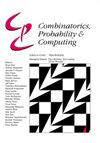Cetyl Trimethyl Ammonium Bromide as Anti-Pit Agent for Mild Steel in Sulfuric Acid Medium
IF 0.8
4区 数学
Q3 COMPUTER SCIENCE, THEORY & METHODS
引用次数: 13
Abstract
Pitting corrosion is a very serious problem for mild steel when it comes in contact with the dilute sulfuric acid medium. Specialized corrosion inhibitors are essentially required to minimize pitting and uniform types of corrosion in mild steel. Most of the corrosion inhibitors discovered so far protects the mild steel from uniform type of corrosion. But pitting corrosion is more fatal than a uniform type of corrosion because it immediately makes mild steel unfit for use as leakage starts from the pit. The objective was to protect the mild steel alloys from pitting corrosion when comes in contact with dilute sulfuric acid by the use of organic corrosion inhibitor. Cetyl Trimethyl Ammonium Bromide (CTAB) is tested as a corrosion inhibitor for mild steel in 0.1 N H2SO4 as corroding medium at 25.0, 30.0 and 35.0°C by weight loss, electrochemical polarization, and Impedance spectroscopy methods. Surface study of corroded and un-corroded specimens of mild steel was carried out by Metallurgical Research Microscopy (MRM) and Scanning Electron Microscopy (SEM) techniques. Surface study confirms that the adsorption of CTAB takes place through nitrogen atom resulting in the formation of uniform, nonporous, passive film confirmed by decrease in Warburg Impedance (Zw), decrease in Faradaic current, increase in Capacitive current, an increase in charge transfer resistance, Rct (41 to 401 Ω cm2) and significant increase in capacitive loop in Nyquist plot with increase in concentration of CTAB which results in significant decrease in corrosion rate of mild steel in 0.1N H2SO4 medium (percentage corrosion inhibition efficiency: 95.0%) especially eradicating pitting type of corrosion. CTAB was proved to be a very good anti-pit agent for mild steel in 0.1N sulfuric acid medium. Pitting and uniform type of corrosion was significantly reduced by the use of CTAB as corrosion inhibitor for mild steel in the dilute sulfuric acid medium at 25.0, 30.0 and 35.0°C.十六烷基三甲基溴化铵作为低碳钢在硫酸介质中的防点蚀剂
低碳钢在稀硫酸介质中发生点蚀是一个非常严重的问题。必须使用专门的缓蚀剂,以最大限度地减少软钢中的点蚀和均匀腐蚀类型。迄今为止发现的大多数缓蚀剂都能保护软钢免受均匀类型的腐蚀。但是,点蚀比均匀类型的腐蚀更致命,因为当点蚀开始泄漏时,它会立即使软钢不适合使用。目的是使用有机缓蚀剂保护低碳钢合金在与稀硫酸接触时免受点蚀。采用失重法、电化学极化法和阻抗谱法,在25.0、30.0和35.0°C的0.1N H2SO4腐蚀介质中,对十六烷基三甲基溴化铵(CTAB)作为软钢的缓蚀剂进行了测试。采用冶金研究显微镜(MRM)和扫描电子显微镜(SEM)技术对低碳钢腐蚀和未腐蚀试样的表面进行了研究。表面研究证实,CTAB的吸附是通过氮原子进行的,从而形成均匀、无孔的无源膜,Warburg阻抗(Zw)降低、法拉第电流降低、电容电流增加、电荷转移电阻增加证实了这一点,Rct(41至401Ωcm2),奈奎斯特图中的失能环随着CTAB浓度的增加而显著增加,这导致软钢在0.1N H2SO4介质中的腐蚀速率显著降低(缓蚀率百分比:95.0%),尤其是消除点蚀型腐蚀。CTAB在0.1N硫酸介质中对软钢具有很好的防点蚀性能。在25.0、30.0和35.0°C的稀硫酸介质中,CTAB作为软钢的缓蚀剂,显著减少了点蚀和均匀型腐蚀。
本文章由计算机程序翻译,如有差异,请以英文原文为准。
求助全文
约1分钟内获得全文
求助全文
来源期刊

Combinatorics, Probability & Computing
数学-计算机:理论方法
CiteScore
2.40
自引率
11.10%
发文量
33
审稿时长
6-12 weeks
期刊介绍:
Published bimonthly, Combinatorics, Probability & Computing is devoted to the three areas of combinatorics, probability theory and theoretical computer science. Topics covered include classical and algebraic graph theory, extremal set theory, matroid theory, probabilistic methods and random combinatorial structures; combinatorial probability and limit theorems for random combinatorial structures; the theory of algorithms (including complexity theory), randomised algorithms, probabilistic analysis of algorithms, computational learning theory and optimisation.
 求助内容:
求助内容: 应助结果提醒方式:
应助结果提醒方式:


